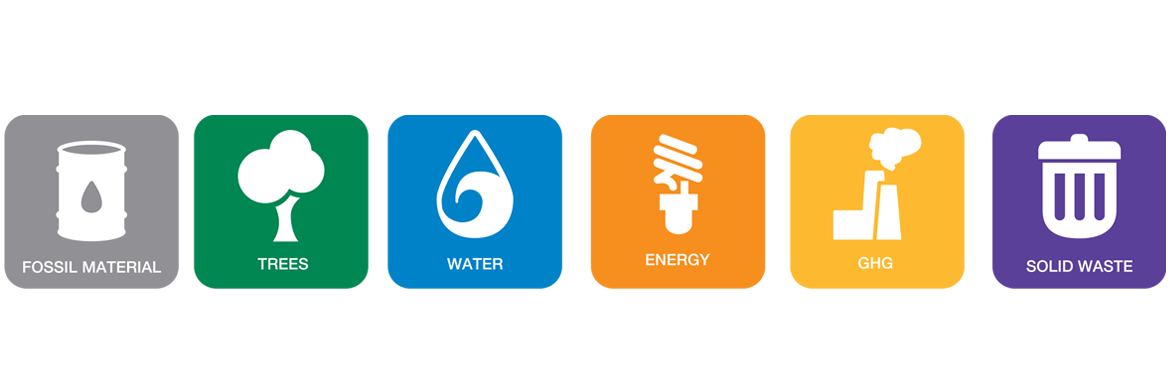The Avery Dennison Greenprint methodology includes the following six impact categories as measures of environmental performance:
Fossil material: A measure of the depletion of fossil resources for material inputs in barrels of oil equivalent. A barrel of oil is equivalent to 42 American US gallons (158.98 liters).
Biobased: A measure of the total amount of Biobased material resources used as material inputs.
Water consumption: A measure of the amount of process water that is treated and discharged to receiving waters. This measure does not include water used for the generation of electricity via hydropower or water used for process cooling.
Energy: A measure of the total amount of primary energy extracted from the earth, including petroleum, hydropower; and renewable sources such as solar power, wind power, and biomass. This does not include the amount of fossil material used as feedstock. The efficiency of electric power and heating processes is taken into consideration.
Greenhouse Gases (GHG): A measure of greenhouse gas emissions, such as CO2, CH4, and N20. These emissions are causing an increase in the absorption of radiation emitted by the earth, magnifying the natural greenhouse effect.
Solid Waste: A measure of the total amount of solid waste generated that is disposed of offsite. This does include waste prior to incineration.


